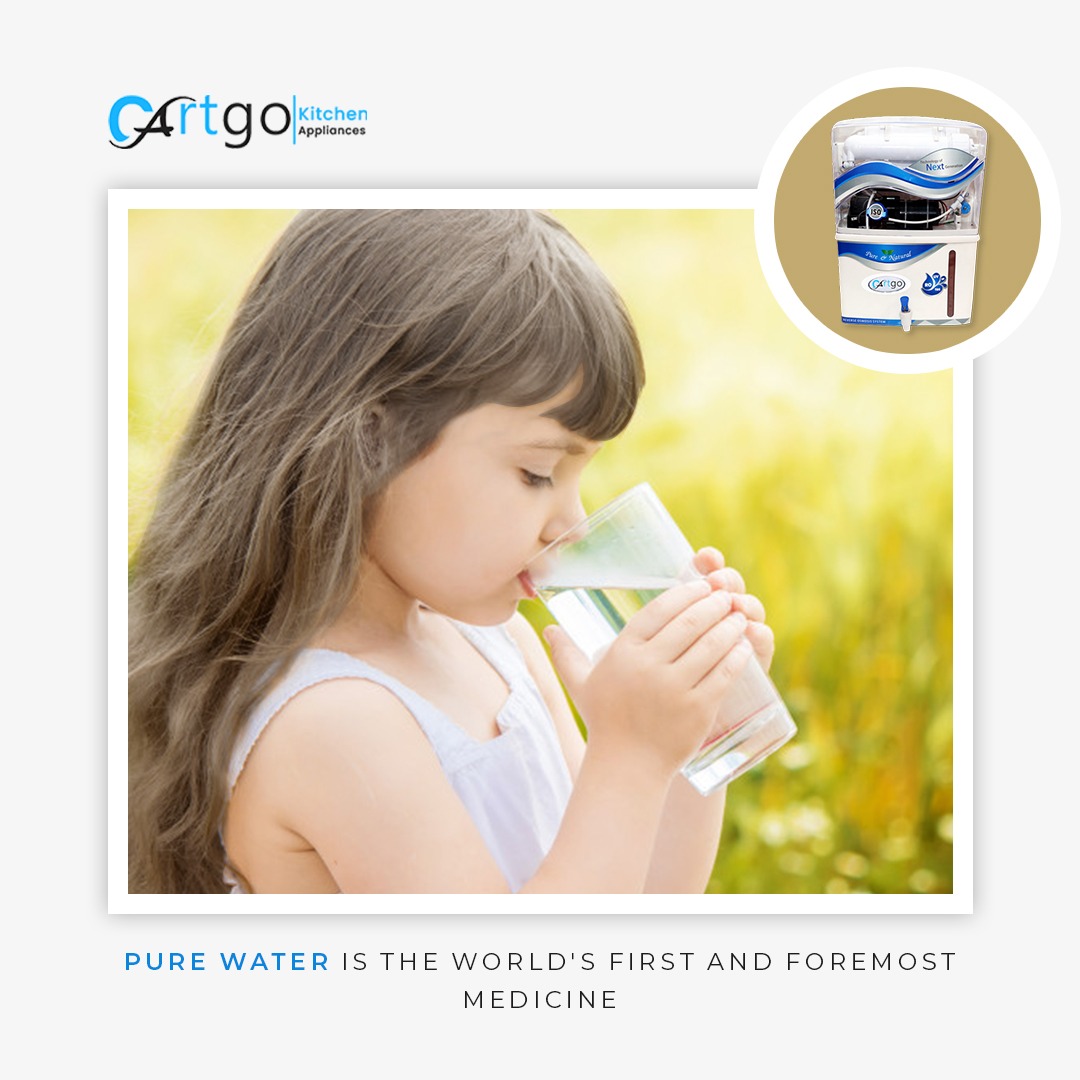Water is a transparent, tasteless, odorless, and nearly colorless chemical substance, which is the main constituent of Earth's streams, lakes, and oceans, and the fluids of most living organisms. It is vital for all known forms of life, even though it provides no calories or organic nutrients. Its chemical formula is H2O, meaning that each of its molecules contains one oxygen and two hydrogen atoms, connected by covalent bonds. Water is the name of the liquid state of H2O at standard ambient temperature and pressure. It forms precipitation in the form of rain and aerosols in the form of fog. Clouds are formed from suspended droplets of water and ice, its solid state. When finely divided, crystalline ice may precipitate in the form of snow. The gaseous state of water is steam or water vapor. Water moves continually through the water cycle of evaporation, transpiration(evapotranspiration), condensation, precipitation, and runoff, usually reaching the sea.
To create truly pure water in the home setting, water that is physically, chemically and energetically pure, requires just the right set of conditions be brought together in just the right way. At a minimum, these include practical use of filtration and purification technologies along with a scientific understanding of water and how nature intended it to be. It’s not easy making sense of all the different water filters and purifiers available in the market today and unfortunately the terms are often used interchangeably. Add to that the daily headlines about new contaminants and toxins discovered in our water supplies and many people throw up their hands at the thought of ever being truly confident about the quality and purity of the water they are drinking, cooking and preparing meals with every day.
Actually, creating truly pure, hydrating water begins with an understanding of the difference between a water filter and a water purifier.
· A water filter is a porous substance such as activated carbon which removes sediment and unwanted substances such as harmful chemicals and toxins from our water. Although filters are valuable, by themselves they are generally inadequate for turning municipal or well water into healthy drinking water. A filter improves taste and odor and reduces the level of many chemical contaminants in drinking water but no filter or combination of filters can even come close to eliminating all the known toxins present in our water today much less the all toxins we don’t even know about yet!
· A water purifier is defined as a system that removes 90-95% of all contaminants in water. There are three recognized purifier technologies known today: reverse-osmosis, deionization, and distillation. Because of their powerful capabilities, purifiers must form the foundation of any drinking water system to have a chance at creating truly pure water.
Purified water needs to be totally free from all bacteria, microbes, toxins, sediment, volatile organic chemicals (VOC) and all other contaminants. One reason that most purifying systems on the market such as reverse osmosis do not create truly pure water is that while they usually utilize filters in a complementary way, they rarely use multiple purifiers to remove contaminants above the 90-95% purification level and maintain that level of effectiveness over time. Reverse osmosis systems for example, start at 90-95% purification when new, but decline over time to well below that. Thus, when you change your membrane after a year, you could be drinking water that is only 80% pure or less! With the number of toxins present in our water today, that figure is unacceptable.Cartgo provides best water purifiers and is the only home appliance wholesale distributor in delhi.
